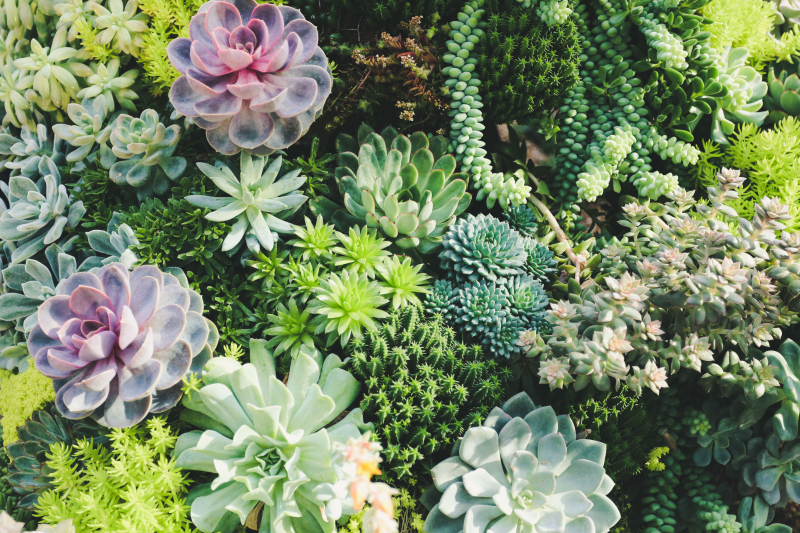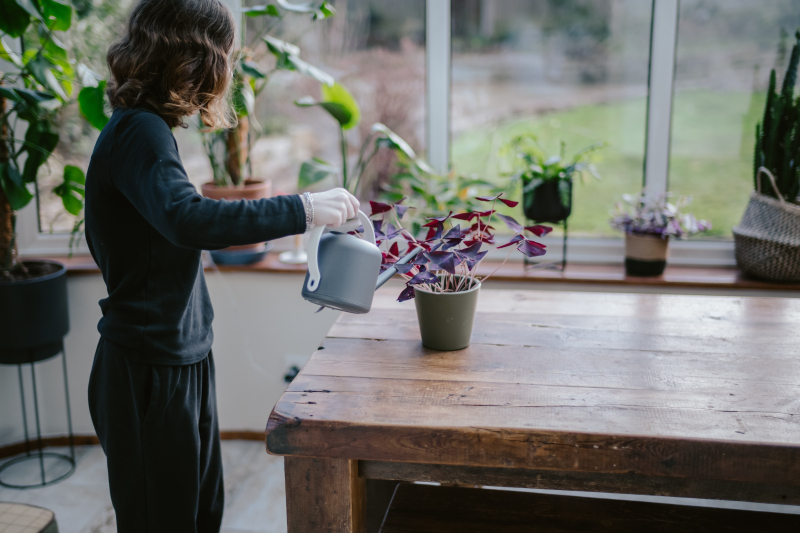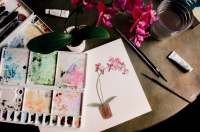How to choose plants…
So, it’s settled – you want to turn your house into a botanical garden. But how do you pick the right inhabitants?
Consider these simple tips:
-
Think about the lighting in your home. Different plants require different levels of light, so it's essential to choose a plant that can thrive in the lighting conditions of your home.
-
Bear in mind your lifestyle. If you're always busy or just might have a hard time keeping up with care routine schedules, the plant of your choice probably shouldn’t require frequent watering.
-
Assess the size of your space. If it’s a dorm room, buying a ceiling-height palm is not the best idea. It’s better to start with something modest and small.
Having found answers to these questions, you might want to google the plants that meet your demands. And if you’re already on a shopping mission, pay attention to these details:
-
Before buying a plant, inspect it for any signs of yellowing leaves, brown spots, or insect damage. You don't want to bring home a plant that will infect your other plants.
-
Try not to buy an adult plant. Young plants tolerate stress better and easily adapt to new environments. Even in very caring hands, an adult plant will take longer to adapt.
… and where to find them
Houseplants are available in abundance at retail stores like Leroy Merlin or Maxidom, but from personal experience, greenery from there doesn't last long even if it looks perfect on stalls. Luckily, there are more places for plant hunting!
-
Avito. One man’s trash is another man’s treasure, and plants are no exception. There’re various plants on sale here, and even their parts – sprouts, leaves, or roots. Many people give away greenery from their homes because they are moving out, or don’t have time to take care of it – you can become a savior and get a luxury houseplant on a dime.
-
Plant watchers. This friendly Telegram community is great for exchanging or simply giving away plants and gardening tools in St. Petersburg. What’s more, here you can ask for any topic-related advice on your plant. Collective wisdom often finds the answer!
-
St. Petersburg Botanical Garden. Regularly, the home of the city’s most exotic plants organizes a sale of surplus seedlings – and it’s always a mystery what will be on offer. Check the news section of their website to be notified about the next event.

Credit: Yen Vu (@yendvu) via Unsplash
Top low-maintenance plants
If you’re nervous about killing a plant, start with those that don’t require much attention. Here are some species that are sure to thrive even when neglected.
-
Aloe vera. This easy-to-care-for succulent also has medicinal properties. It prefers bright, indirect light and infrequent watering.
-
Snake plant (Sansevieria). It can tolerate low light and infrequent watering, making it a great choice for beginners.
-
ZZ plant (Zamioculcas zamiifolia). Its glossy leaves can grow up to a meter long and add a tropical touch to any room. It’s also an excellent air purifier.
-
Spider plant (Chlorophytum comosum). It copes well with low light levels and artificial lighting, but strong, direct sunlight will crisp the leaves.
-
Dracaena (Dracaena marginata). There’s a variety of dracaena, but they all have similar care requirements: bright, indirect light and infrequent watering.
Remember, even low-maintenance plants still require some care. Make sure to research the specific care requirements of any plant you bring into your home.

Credit: Annie Spratt (@anniespratt) via Unsplash
The 5 don'ts of indoor gardening
Every houseplant is unique, and, therefore, requires a specific care routine. But behind this uniqueness, there are some ground rules to help keep your green friends safe and sound. We reached out to fellow florists for some most common gardening mistakes – just to make sure you can avoid them from day one:
-
Don’t place plants under direct sunlight or too close to lamps in your room. This may lead the chlorophyll in the leaves to break down, causing them to turn yellow and fall off.
-
Don’t use boiled tap water for plants as it contains no essential microelements; opt for filtered water instead. The temperature matters, too – hot or even warm water will kill a plant immediately.
-
Don’t water the plant from above, covering its leaves and stems. Focus on watering the soil below the leaves and near the roots. This helps prevent bacterial and fungal infections.
-
If a leaf turns yellow or fades, don’t remove it with your hands – cut it with scissors closer to the stem for sanitary reasons.
-
When it’s cold, don’t bring plants outside without a coating. Wrap them in a blanket or any other fabric to keep the temperature stable. Otherwise, they could die from overcooling.




